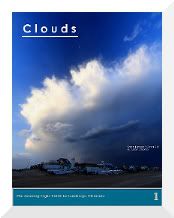Many books have been written about landscape photography, from the ancient times of film to the new era of digital cameras it is extremely surprising that even new books about landscape photography are still based in concepts and ideas that were needed or useful in the times of film.
I believe that learning the "theory" about exposure, focus and all the stuff that I'm going to obliterate is useful but one thing is knowledge and another is practice. In the modern day of digital cameras you are probably wasting precious time doing strange rituals from the film era, you lose time that you can use to focus in your composition and finding the perfect light. Yes, those things haven't changed, you need a good composition and the perfect light for your composition to create a successful landscape.
We assume in this tutorial that we are focusing in landscapes so things don't move, you are using a tripod, a cable release or remote control and you do have some time to take your shots.
Exposure
I'll go quickly to the point: the perfect exposure is just the longest you can afford without blowing highlights. End.
The way to expose is very simple, guesstimate an exposure, check the histogram and if you still have room take a longer exposure, repeat until highlights get blown and then go back 1 step. This iterative process will give you the optimal exposure for the scene, where optimal means maximum SNR (signal to noise) rate. Then in post-processing you can underexpose as much as you want and in the comfort of your home find the exposure level that is better for the scene.
You don't need a light meter, you don't even need your camera light meter, you don't need spot metering in any areas and you certainly don't even need to know what the zone system
High contrast scenes & filters
When the contrast in the scene is too high and the dynamic range of your camera is not enough you will find that keeping the highlights under control mean badly underexposing the dark areas, losing detail and that's bad. When that happens don't say things about the gods of landscapes or look for a filter, you just need to take another shot!. Once you have exposed for not blown highlights take as many shots as you need increasing the exposure in 2EV intervals until you have good detail in the dark areas. In your comfy home you can then create an HDR, blend two or more exposures using layers, use other exposure fusion programs, whatever you want.
The results will be always as good as using grad filters or better, there is no way, I repeat no way that you can get worst results.
The advantages should be clear: you don't have to carry filters and holders around; you don't put any filthy filter in the middle of your lens and the scene; you have complete control about how the transition from exposures will be; you can even deal with scenes where an object invades the highlights, scenes that are impossible using grad filters. Why would anyone on earth want to use a grad filter in 2010? I can't imagine!
Focus & DOF
Focusing is quite simple too, activate live-view on your camera then zoom as much as you can, focus where you want the maximum sharpness, activate the DOF preview button and check the focus in other areas. If you don't have enough focus increase the aperture (from F4 to F5.6 for example) and repeat. This will give you the best aperture and the best focusing possible.
You don't need AF in your camera, you don't need even a single focus point, you don't need focus tracking, 90 focus points any of that. You also don't need hyperfocal distance tables, calculators and oracles. You can just "see" what you are going to do in live view, then just make the shot what you need it to be. As simple as that.
When you can't achieve enough DOF without using very small apertures you are in the risk of diffraction ruining your shot. I wouldn't recommend using more than F11 on APS-C sensors, F16 on FF cameras. In case of need, take as many shots as you need changing the focus and then merge them in your home in a manual way or using software such as HeliconFocus. Two shots with perfect focus at F8 will always lead to a better result than a shot at F32 where things are wel... ugly.
Conclusion
You only need to use live-view and the DOF preview button to find the best aperture and focus, then expose as much as you can to find the perfect exposure. The rest can be done at home, with a cup of tea and some music. If you know how to do things right why would you do things in the old and complicated way ?
